Coast Guard comes to aid of cruising rally
Published on November 10th, 2013
Two rival sailing organizations, each planning to travel from Hampton Roads to the Caribbean: One group shipped out ahead of schedule last weekend (on Nov. 2) in a single pack to get out ahead of bad weather. The other group waited.
Most of the boats in the second group, sailing in the Salty Dawg Rally out of Hampton, left Tuesday and Wednesday (Nov. 5 and 6) after the first of two forecasted cold fronts had passed. They hoped to cross through the volatile Gulf Stream off Cape Hatteras before the second cold front moved into the area Thursday.
Many of the Salty Dawgs, though, didn’t make it across the strong ocean current before conditions got rough, resulting in an unusually busy night for Coast Guard rescue teams in North Carolina – and prompting some in the sailing community to question the safety of the event.
Roughly 115 boats participated in the third-annual Salty Dawg Rally. Several experienced serious problems late Thursday as they sailed into strong crosswinds and choppy seas some 200 miles off the coast of North Carolina.
Two boats lost their masts; four others had serious rudder problems. One sailor lost his footing and broke an arm. Crew members from other boats reported intense seasickness.
In all, the Coast Guard responded to five distress calls from Salty Dawg participants (click here for USCG report).
By Thursday evening, the 41-foot sailboat Ahimsa was taking on water faster than the crew could bail. Around 1:30 a.m. Friday, an MH-60 Jayhawk helicopter from Elizabeth City arrived overhead after stopping to refuel aboard the Vella Gulf, a Navy cruiser. One by one, the Ahimsa’s four crew members jumped into the choppy sea and into the arms of a rescue swimmer, Petty Officer 2nd Class Chad Watson.
“They were pretty shaken up,” Watson said, hours after completing the rescue at sea. “It was a rough night out there.”
The four sailors were hoisted, one by one, into the chopper and flown to Elizabeth City; all declined medical treatment once on the ground.
Not far away from where the Ahimsa foundered, the crew of the 38-foot sailboat Nyapa sent a satellite signal indicating they had lost their mast and were taking on water. A Coast Guard HC-130 Hercules airplane that had been circling above the Ahimsa was diverted toward the distress signal. The boat’s crew later reported that the vessel was fine – minus the mast – and that they were continuing the journey by motor.
The crew of the sailboat Aurora also sent out a distress signal when conditions turned ugly, but they later contacted another sailboat, which passed word to the Coast Guard that the crew had decided to head for Bermuda.
The fourth vessel in distress, the Braveheart, was about 50 miles southeast of Ocracoke Inlet when the crew reported that a 67-year-old man had a serious arm injury. The Coast Guard Cutter Block Island arrived, intending to accompany the Braveheart back to shore. Instead, it was diverted to help yet another disabled sailboat, so Braveheart sailed to Morehead City, N.C. on its own.
The Block Island moved on to the 54-foot sailboat Zulu, which was adrift about 100 miles east of Oregon Inlet. The cutter crew towed the boat to shore Friday morning.
The rash of distress calls stretched the on-duty Coast Guard crews and required additional personnel to be called in, but it was nothing the service couldn’t handle, said Coast Guard spokesman Chief Nyx Cangemi.
Word of the harrowing night at sea spread quickly among the East Coast sailing community, prompting some to question in social media posts and online forums the wisdom of setting sail with such a narrow window to beat rough weather.
Andy Schell fears the episode could be a black eye for ocean sailing. Schell, an event organizer for World Cruising Club, is in charge of planning the Caribbean 1500, an annual cruise, or rally, from Hampton Roads to the Virgin Islands.
The rally was scheduled to begin last Sunday, but the threat of back-to-back cold fronts prompted event organizers to set sail a day early from Portsmouth. Each of the 30 boats participating in that event crossed through the Gulf Stream without issue, Schell said.
“Nobody wants to see this happen,” Schell said. “It’s really a shame. That’s why we use the sailing model that we use – to minimize the risk as much as possible and keep everyone safe.”
The Caribbean 1500, which charges a participation fee and adheres to International Sailing Federation safety standards, has long required each boat to submit to pre-event safety checks and strongly suggests that its participants set sail within a certain window. If the boats hadn’t left a day early, Schell said, forecasts suggested it would be at least a week before conditions improved enough to begin the event.
“We wouldn’t have sailed Wednesday or Thursday,” he said.
The Salty Dawg Rally started three years ago after a core group of mariners from the Caribbean 1500 broke away. Linda Knowles and her husband founded the rally for seasoned mariners who desired a less rigid experience. The group doesn’t charge a participation fee, and the responsibility for deciding when to set sail is entrusted to each skipper.
“It’s not as if we’re just a bunch of wayward sailors who leave when we want and do what we want and don’t pay attention to forecasts,” Knowles said, noting that her group provides training opportunities and daily sailing forecasts. “We give them advice, but the decision as to when they go is totally up to them, and they’re responsible for that decision. They knew those seas were going to be bad.”
The weather conditions were a bit worse than forecasted, Knowles said, and the front lingered longer than expected. Still, the majority of the Salty Dawg participants made it through the Gulf Stream without trouble, she said.
Knowles said she’s thankful nobody was seriously injured or killed. In her mind, Thursday night was a learning experience for a young and fast-growing sailing organization.
“We’ll take a look at what happened and will want to talk to each boat to understand what went wrong and what could have been done to prevent it,” Knowles said. “We’ll get together as a board to discuss what we can do better, but our model will not change. We firmly believe in what we’re doing.”
By Mike Hixenbaugh, The Virginian-Pilot, © November 9, 2013
Click here for USCG report.


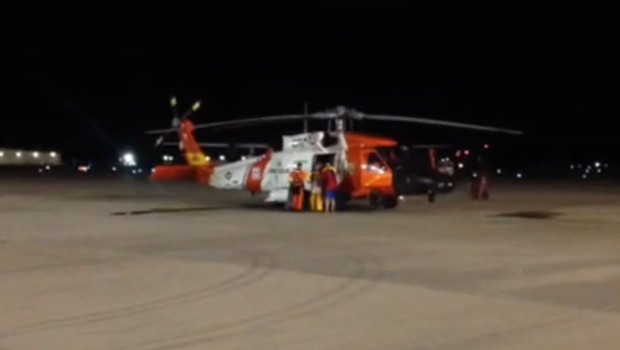


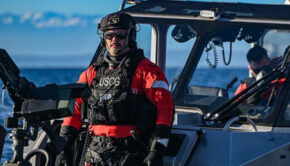
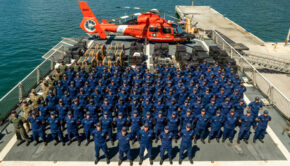
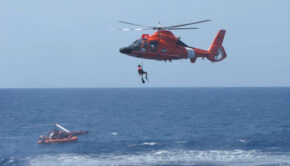
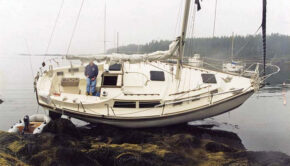
 We’ll keep your information safe.
We’ll keep your information safe.